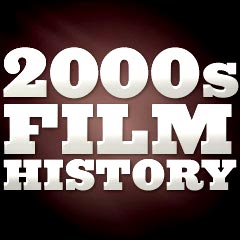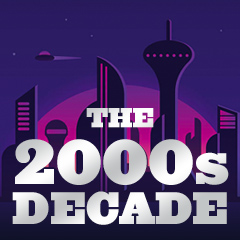|
Listing of Major Film Franchises in the 2000s:
The era began with the following major franchises or series of films:
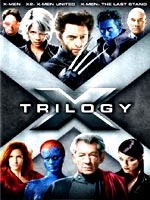 the complete X-Men series (2000-2006) - X-Men (2000), X2: X-Men United (2003), and X-Men: The Last Stand (2006) plus the origin film X-Men Origins: Wolverine (2009) - X-Men (2000) was the first major Marvel superhero comic ever adapted for the screen, and also one of the most profitable film franchises (of comics). the complete X-Men series (2000-2006) - X-Men (2000), X2: X-Men United (2003), and X-Men: The Last Stand (2006) plus the origin film X-Men Origins: Wolverine (2009) - X-Men (2000) was the first major Marvel superhero comic ever adapted for the screen, and also one of the most profitable film franchises (of comics).
- Peter Jackson's complex, monumental The Lord of the Rings trilogy epic (2001-2003) (based upon the writings and fantasy epics of J.R.R. Tolkein), regarding a Middle Earth world of wizards, elves, villains, hobbits, a CGI creature named Gollum (Andy Serkis), and a quest to destroy a ring: The Lord of the Rings: The Fellowship of the Ring (2001), The Lord of the Rings: The Two Towers (2002), and The Lord of the Rings: The Return of the King (2003)
- all three Shrek films (2001-2007), DreamWorks' revisionist fairy tale with the loveable green, fat ogre Shrek (Mike Myers), a Prince Charming for Princess Fiona (Cameron Diaz): Shrek (2001), Shrek II (2004), and Shrek the Third (2007)
- all six of the magical wizardry Harry Potter films
(derived from the J.K. Rowling novels) (2001-2009), featuring the "Chosen One" Harry Potter (Daniel Radcliffe) and his student friends (Rupert Grint, Emma Watson) battling "He Who Must Not Be Named" Lord Voldemort (Ralph Fiennes) at Hogwarts School: Harry Potter and the Sorcerer's Stone (2001), Harry Potter and the Chamber of Secrets (2002), Harry Potter and the Prisoner of Azkaban (2004), Harry Potter and the Goblet of Fire (2005), Harry Potter and the Order of the Phoenix (2007), and Harry Potter and the Half-Blood Prince (2009)
- four Fast and Furious actioners (2001-2009): The Fast and the Furious (2001), 2 Fast 2 Furious (2003), The Fast and the Furious: Tokyo Drift (2006), and Fast & Furious (2009)
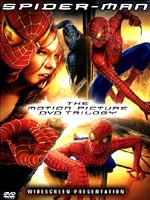 the three-part Spider-Man films (2002-2007): Spider-Man (2002), Spider-Man 2 (2004), and Spider-Man 3 (2007) the three-part Spider-Man films (2002-2007): Spider-Man (2002), Spider-Man 2 (2004), and Spider-Man 3 (2007)
- the Bourne Trilogy (2002-2007) based upon Robert Ludlum spy novels: The Bourne Identity (2002), The Bourne Supremacy (2004), and The Bourne Ultimatum (2007)
- three Pirates of the Caribbean films (2003-2007), a trilogy of supernatural pirate films with a legendary nemesis (Barbossa, Davy Jones), and a love triangle involving heroic Will Turner (Orlando Bloom), the beautiful spunky damsel Elizabeth Swann (Keira Knightley), and Johnny Depp as the swashbuckling, eccentric pirate scoundrel Captain Jack Sparrow: Pirates of the Caribbean: The Curse of the Black Pearl (2003), Pirates of the Caribbean: Dead Man's Chest (2006), and Pirates of the Caribbean: At World's End (2007)
- and the growing Chronicles of Narnia trilogy (2005-2010): The Chronicles of Narnia: The Lion, The Witch, and the Wardrobe (2005), The Chronicles of Narnia: Prince Caspian (2008), and The Chronicles of Narnia: The Voyage of the Dawn Treader (2010)
Franchise Supplements in the 2000s Decade:
Other franchises that had already begun before 2000 added supplemental installments to their series:
- Mission: Impossible II (2000), and Mission: Impossible III (2006) - two more Mission Impossible films
- The Mummy Returns (2001), The Scorpion King (2002), and The Mummy: Tomb of the Dragon Emperor (2008) - three The Mummy sequels
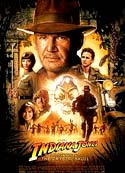 Indiana Jones and the Kingdom of the Crystal Skull (2008) - the fourth and last Indiana Jones film Indiana Jones and the Kingdom of the Crystal Skull (2008) - the fourth and last Indiana Jones film
- Star Trek Nemesis (2002) - the last entry in the Star Trek (Next Generation) films, and the relaunched Star Trek (2009)
- Star Wars: Episode II - Attack of the Clones (2002) and Star Wars: Episode III - Revenge of the Sith (2005), the last two episodes of the Star Wars Prequel trilogy
- Batman Begins (2005) and The Dark Knight (2008) - two more Batman films
- The Matrix Reloaded (2003) and The Matrix Revolutions (2003) - the last two films in the Matrix trilogy (both in 2003)
- Terminator 3: Rise of the Machines (2003) and Terminator Salvation (2009) - two more Terminator films
- Hannibal (2001), Red Dragon (2002), and Hannibal Rising (2007) - three more 'Hannibal Lecter' films
- Friday
the 13th, Jason X (2001), Freddy vs. Jason (2003) (aka Friday the 13th, Part 11), and Friday the 13th (2009) (aka Friday the 13th, Part 12) - three more Friday the 13th films
- Halloween: Resurrection (2002), Halloween (2007), and Halloween II (2009) - three more Halloween films
- Transformers (2007) and Transformers: Revenge of the Fallen (2009) - two Michael Bay-directed Transformers films
There were also many films that capped off a long series from the past - for instance, a Tim Burton reboot of Planet of the Apes (2001), the last "Jack Ryan" film The Sum of All Fears (2002), a long-awaited Superman Returns (2006) with newcomer Brandon Routh, the Rocky Balboa (2006) reprise, and the last 'Die Hard' film Live Free or Die Hard (2007).
Two highly-successful 007 film sequels starred rugged and blonde (the first!) Daniel Craig as a new, brutally-fierce anti-hero James Bond, the sixth incarnation (superceding Pierce Brosnan) - in the 21st film Casino Royale (2006) and the 22nd film Quantum of Solace, 007 (2008).
Franchises, Adaptations, and Remakes Due in the Future:
More franchise sequels to 2009 (and earlier) releases were due out in 2010:
And there were other adaptations and remakes based upon older 1980s hits in the works:
Top Earning Films By Genre:
Although the effects of inflation can drastically skew things, many of the top-grossing (domestic) films of various genre types occurred in the decade of the 2000s:
- Computer-Animated Film (PG): Shrek II (2004)
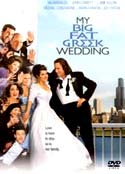 Computer-Animated Film (G): Finding Nemo (2003) Computer-Animated Film (G): Finding Nemo (2003)- Live-action Fantasy Film: The Lord of the Rings: The Return of the King (2003)
- Romantic Comedy: My Big Fat Greek Wedding (2002) - the independently-produced film with an unknown cast and a simple premise became one of the most profitable movies of all time (through word-of-mouth advertising), earning $241.4 million at the box office, while costing only about $5 million to make. It was also the top-earning (domestic gross) film to never reach # 1
- Romantic Fantasy: The Twilight Saga: New Moon (2009)
- Teen-oriented High School Comedy: Superbad (2007)
- Chick-flick: Sex and the City (2008)
- Raunchy R-rated Comedy: The Hangover (2009)
- 3-D Film: Avatar (2009)
- Action Film: Transformers (2007)
- Pirate-related Adventure-Swashbuckler Film: Pirates of the Caribbean: Dead Man's Chest (2006)
- Comic-book Adaptation: The Dark Knight (2008)
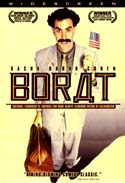 Video-game Adaptation: Lara Croft: Tomb Raider (2001) Video-game Adaptation: Lara Croft: Tomb Raider (2001)- Controversial Film: The Passion of the Christ (2004)
- "Torture-Porn" Horror Film: Saw II (2005)
- Documentary (non-IMAX): Fahrenheit 9/11 (2004)
- Foreign-Language Film: Crouching Tiger, Hidden Dragon (2000)
- Mockumentary: Borat (2006)
- Sports-Related: The Blind Side (2009)
- Musical Concert: Michael Jackson's This is It (2009)
- R-rated Film: The Passion of the Christ (2004)
- James Bond Film: Quantum of Solace (2008)
The Most Controversial and Explicit Films of the Decade:
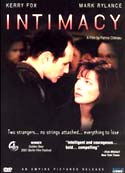 Many films pushed the envelope even further than expected, in the areas of drug use, sex, and violence. Some of the most blatant examples included the following: Many films pushed the envelope even further than expected, in the areas of drug use, sex, and violence. Some of the most blatant examples included the following:
- Darren Aronofsky's visually hyper-kinetic, disturbing and shocking drug-addiction drama Requiem for a Dream (2000) -
a portrait of four inter-related individuals including a desperate aging widow suffering from a declining addiction to amphetamines (Ellen Burstyn), her heroin-addicted son (Jared Leto), and his loyal, prostituted fellow-addict girlfriend (Jennifer Connelly)
- Catherine Breillat's shocking film of teenage sexuality Fat Girl (2001, Fr.)
- Patrice Chéreau's French arthouse film Intimacy (2001), her first English-language film, was noted for extremely graphic and explicit sex scenes, heretofore unseen. It was the first theatrically-distributed film to depict the act of fellatio. It portrayed a married woman's (Kerry Fox) engagement in a series of once-weekly, Wednesday afternoon, emotionally-apathetic, physical encounters with emotionally-cold and lonely, divorced bar manager Jay (Mark Rylance). This controversial film exhibited their sexual couplings, with numerous, unflattering and raw, wordless sexual encounters
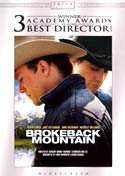 Alfonso Cuarón's sexy Mexican coming-of-age road film Y Tu Mama Tambien (2002, Mex.) Alfonso Cuarón's sexy Mexican coming-of-age road film Y Tu Mama Tambien (2002, Mex.)- the traumatic reversibly-told Irreversible (2002, Fr.) with a shocking, real-time 9 minute rape scene
- the explicit arthouse film The Brown Bunny (2003) with a seemingly-real act of fellatio between the film's director/actor Vincent Gallo and fellow actress Chloe Sevigny
- Bernardo Bertolucci's explicit film of sexual discovery and intimacy, The Dreamers (2003) - it was the first NC-17 rated film in 6 years
- 9 Songs (2004, UK) with unsimulated sexual intercourse between the two leads
- Mel Gibson's ultra-violent, blood-soaked and much-debated The Passion of the Christ (2004)
- Trey Parker's un-PC Team America: World Police (2004) with puppets having sex
- Michael Moore's scathing documentary Fahrenheit 9/11 (2004)
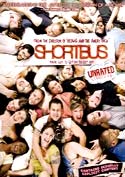 the highly-acclaimed Brokeback Mountain (2005) was the first mainstream-accepted homosexual 'gay' cowboy romance, eloquently filmed by Ang Lee. It was a tale of secret romance, mournful longing and tragedy in an affair between two 1960s farmhands (Heath Ledger, Jake Gyllenhaal) that spanned decades. the highly-acclaimed Brokeback Mountain (2005) was the first mainstream-accepted homosexual 'gay' cowboy romance, eloquently filmed by Ang Lee. It was a tale of secret romance, mournful longing and tragedy in an affair between two 1960s farmhands (Heath Ledger, Jake Gyllenhaal) that spanned decades.- John Cameron Mitchell's Shortbus (2006) - it had the widest release of any film showing unsimulated sex, and was screened at the Toronto Film Festival and in theaters nationwide, including mainstream cinemas and multiplexes in malls
Animated Films With Wide Appeal:
Many of the best animated films of the decade featured incredible technological advances in CGI, and a number of them were made to be appealing to both children and adults. The most exceptional animated films of the decade of the 2000s, other than Pixar animations (see below), included:
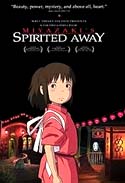 writer/director Hayao Miyazaki's best-selling Japanese anime Spirited Away (2001, Jp.) - it became the best-selling Japanese movie of all time, and also was the first anime feature film to win an Academy Award -- Best Animated Feature (awarded in 2002). writer/director Hayao Miyazaki's best-selling Japanese anime Spirited Away (2001, Jp.) - it became the best-selling Japanese movie of all time, and also was the first anime feature film to win an Academy Award -- Best Animated Feature (awarded in 2002).- Final Fantasy: The Spirits Within (2001) - the first photo-realistic, fully computer-generated feature film
- Richard Linklater's stunningly-rotoscoped Waking Life (2001)
- the three Shrek films (2001, 2004, and 2007)
- the Ice Age films (2002, 2006, and 2009)
- the Iranian coming-of-age Persepolis (2007)
- Waltz with Bashir (2008, Israel) - the first animated film to be nominated in the Best Foreign Film Oscar category
- DreamWorks' sci-fi spoof of 50s monster movies, Monsters vs. Aliens (2009) was the first computer-animated feature film to be shot directly in stereoscopic 3-D -- dubbed the Ultimate 3-D
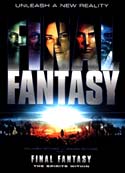 Final Fantasy: The Spirits Within (2001) featured the most complex CG human character ever created - Dr. Aki Ross. She was reported to have 60,000 individual strands of hair. The amount of detail rendered into hair, clothing, skin texture, eyes, and movement was astounding and impressive. The film was inspired by a best-selling series of video games by the film's director, Hironobu Sakaguchi. Its production budget was estimated to be $137 million, but its box-office was only $32 million gross income (domestic) and $53 million (foreign) - $85 million total. The massive losses caused the bankruptcy and closing of its production studio, Square Pictures. Disney's costly animated film failure, Treasure Planet (2002), was also a landmark film -- it was the first film to debut in both the conventional and IMAX formats on the same day (in November). Final Fantasy: The Spirits Within (2001) featured the most complex CG human character ever created - Dr. Aki Ross. She was reported to have 60,000 individual strands of hair. The amount of detail rendered into hair, clothing, skin texture, eyes, and movement was astounding and impressive. The film was inspired by a best-selling series of video games by the film's director, Hironobu Sakaguchi. Its production budget was estimated to be $137 million, but its box-office was only $32 million gross income (domestic) and $53 million (foreign) - $85 million total. The massive losses caused the bankruptcy and closing of its production studio, Square Pictures. Disney's costly animated film failure, Treasure Planet (2002), was also a landmark film -- it was the first film to debut in both the conventional and IMAX formats on the same day (in November).
DreamWorks SKG's Shrek (2001) was the first film to win an Academy Award Oscar for Best Animated Feature, a category introduced in 2001. It counteracted the traditional Disney animation formula for a fairy tale with its main character - an ugly, greenish ogre (voice of Mike Myers), and a pop music soundtrack (featuring songs by Joan Jett, Smash Mouth, and others). PG-rated Shrek 2 (2004) topped G-rated Finding Nemo (2003) in two ways: it was the biggest opening ever for an animated film, and in a little over three weeks became the highest-grossing animated film of all-time.
Pixar's Ascendancy as Feature-Film Animator:
In early 2006, the Walt Disney Co. bought longtime partner Pixar Animation Studios Inc. for $7.4 billion in stock, after a twelve year relationship in which Disney co-financed and distributed Pixar's animated films and split the profits. Of the ten, highly-acclaimed and award-winning CGI films released by Pixar since 1995, seven were released in the decade (averaging almost one each year), and the second sequel Toy Story 3 (2010) debuted in 2010:
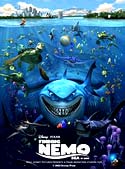 Monsters, Inc. (2001) - Disney's fourth computer-animated comedy with Pixar, featured a one-eyed, lime-colored ball named Mike Wazowski (with voice of Billy Crystal), and his scare-factory buddy James P. "Sulley" Sullivan (voice of John Goodman). Monsters, Inc. (2001) - Disney's fourth computer-animated comedy with Pixar, featured a one-eyed, lime-colored ball named Mike Wazowski (with voice of Billy Crystal), and his scare-factory buddy James P. "Sulley" Sullivan (voice of John Goodman).- Finding Nemo (2003) - This wildly-successful, breakthrough animation was the highest-grossing G-rated computer-animated film ever, Pixar's and Disney's fifth collaboration. It won the Oscar for Best Animated Feature Film! The undisputed box-office champ of the year, it was a sentimental father-son search story. It told the tale of Marlin - a widowed clownfish's (voice by Albert Brooks) search in the Pacific Ocean, with a dopey and forgetful blue tang fish named Dory (voice by Ellen DeGeneres), for missing son Nemo with a withered fin.
- The Incredibles (2004) - director/screenwriter Brad Bird's ingenious action-adventure animation won the Best Animated Feature Oscar. It was Disney's and Pixar's sixth collaboration, and Pixar's first PG-rated film and the longest CG animated film to date (at 115 minutes). It was the first computer-generated animation to successfully show believable human figures or characters, instead of the traditional animal, toy, and creature characters of previous animations. It told the tale of paunchy Bob "Mr. Incredible" Parr (voice of Craig T. Nelson), an ex-do-good Superhero suffering a mid-life crisis and living under-cover in suburbia, with his restless wife Helen (voice of Holly Hunter) - former rubber-limbed masked vigilante Elastigirl. Their children included long-haired daughter Violet (voice of Sarah Vowell) - capable of being invisible, son Dash (voice of Spencer Fox) - who could travel at supersonic speed, and baby Jack-Jack. The entire family was lured back into super-herodom against the evil Syndrome (voice of Jason Lee).
- Cars (2006) - the seventh collaboration, an adventure comedy directed by John Lasseter told an anthropomorphic story about a stock-car (Lightning McQueen, voice of Owen Wilson) on a journey to the races - including nostalgia for Route 66 in a forgotten town called Radiator Springs.
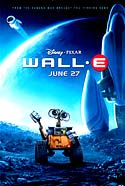 Ratatouille (2007) - the eighth Pixar film - the first film after the Disney purchase - was by writer/co-director Brad Bird. It was a fable about a rat named Rémy (voice of Patton Oswalt) who lived in a Paris bistro-restaurant and had aspirations to be a chef. It also won the Oscar for Best Animated Feature Film. Ratatouille (2007) - the eighth Pixar film - the first film after the Disney purchase - was by writer/co-director Brad Bird. It was a fable about a rat named Rémy (voice of Patton Oswalt) who lived in a Paris bistro-restaurant and had aspirations to be a chef. It also won the Oscar for Best Animated Feature Film. - WALL-E (2008) - this was the ninth Pixar film and another Best Animated Feature Film Oscar winner - a profound animation and environmental cautionary tale (and silent-era throwback) about a waste-removal robot named WALL•E (meaning Waste Allocation Load Lifter Earth-Class) who in the year 2700 discovered the key to planet Earth's future after it was vacated and he was the last robot on Earth doing cleanup. When WALL•E met up with a cold-hearted female search robot named EVE from a space probe and fell robotically in love with her, he chased her across outer space. WALL-E's six nominations tied it with Beauty and the Beast (1991) as the most-nominated animated film.
- Up (2009) - the 10th Pixar film (and another Best Animated Feature Film Oscar winner), an imaginative, life-affirming, coming-of-old-age tale and modern-day adventure classic about a 70s year-old hero - grouchy, elderly widower and balloon salesman Carl Fredricksen (voice of Ed Asner), who soared up in his helium-balloon lifted wooden home, and experienced a slow-building camaraderie with chubby 8 year-old stowaway Wilderness Explorer Scout Russell (voice of Jordan Nagai) as they sailed together to the jungles of South America (and Paradise Falls). It was the second animated film ever nominated for Best Picture (following Beauty and the Beast (1991)), won two Oscar awards: Best Animated Feature Film and Best Original Score, and was one of the top moneymakers of the year (at $293 million to date). It was the first CG-animated Best Picture nominee, and the first to receive a Best Picture nomination since animated films received their own category in 2001. It was the third consecutive Oscar in this category for Disney/Pixar, following Ratatouille (2007) and Wall-E (2008), with the studios now winning 5/9 awards since the new category was established in 2001.
Disney's animated The Princess and the Frog (2009), a modern day retelling of the classic story The Frog Prince, was the studio's first traditional 2-D animated film in 5 years (since Home On the Range (2004)). It also featured the studio's first-ever black female protagonist, an African-American princess named Tiana (voice of Anika Noni Rose).
 Film History of the 2000s
Film History of the 2000s
Part 1, Part 2, Part 3, Part 4, Part 5, Part 6

 
|
